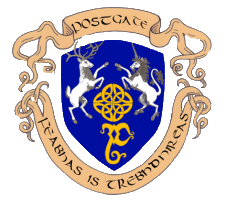Scottish tsavorite Luckenbooth Pendant by George in 14K with diamonds chain not included
Scottish tsavorite Luckenbooth Pendant, An original designed and created by George. This pendant is styled as a Traditional Scottish luckenbooth. I've made it with the care and respect for the Scottish traditions that inspired it. The pendant was first Carved in wax and then cast in gold. If you would like to learn more about the process please follow this link: https://postgatejewelers.com/waxes/ Scottish and Celtic Jewelry is one of our specialties and of course, we have a link for you to follow to see more: https://postgatejewelers.com/scottish-jewelry/
Scottish tsavorite Luckenbooth Pendant Details:
The pendant is made of 14K yellow gold and it has a very fine quality 5mm brilliant cut natural tsavorite as it’s center stone. The crown of the pendant is set with two 1.5mm and one 2mm brilliant cut diamonds, approximately Vs2 G-H in quality. The pendant is approximately 25mm high X 15mm wide. A chain is not included but we can supply you with just about any style you might want if you need one.
Scottish tsavorite Luckenbooth Pendant Custom orders:
You may order your Scottish luckenbooth pendant in 14 K, 18 K, 22 K and in 14 K rose, white and yellow gold. You can also choose the type of stones that you would like to have set into it. We have a page that explains more about custom orders. It also has a selection of some of our favorite custom pieces: https://postgatejewelers.com/special-order-jewelry/
FaceBook:
We have a wide selection of our work on FaceBook. Some pieces are shown in various stages of completion. When we do a special piece for a customer we often send them image of waxes. This makes it easier for them to understand what we are doing. It also allows us to work together and insure the creation of something special:https://www.facebook.com/Postgate-Fine-Jewelers-111540785537658/photos/?view_public_for=111540785537658
The luckenbooth a short history:
The Scottish luckenbooth dates from the late sixteenth century. It originated as a pin that merchants wore in Edinburgh along the
“Royal Mile” who sold their goods out of locked booths.The pins had to be worn to show that the merchant had purchased
a license to sell their goods.
The first luckenbooth brooches were very small. A tradition developed in which the luckenbooth was given to a man’s
sweetheart on their betrothal. It was also considered a lucky charm, that would protect its wearer against the evil eye.
Among the other powers attributed to the luckenbooth was easing the pain of childbirth and ensuring a good supply of
breast milk when pinned to a woman’s petticoats near the left thigh. If pinned to a baby’s shawl, it will protect the child
from being stolen by fairies.
During the 18th and 19th centuries the luckenbooth became larger and more elaborate often inscribed on the back with
biblical quotes or the names or initials of the couple and the date of their wedding.
In the late 1800’s the intertwined hearts that form the lower half of the brooch came to resemble the letter M. Fleur de lys
and thistles also became common elements. These became known as Mary’s Brooches or “Queen Mary’s Brooches”. This
was because Mary Queen of Scots’s husband, Lord Darnley gave her one.
Most contemporary luckenbooth brooches are in the form of two intertwined hearts topped with a crown. In Victorian
times they were often set with garnets. Garnets were believed to have a positive influence on love and symbolized love,
constancy, and friendship.
The Victorian versions of the luckenbooth brooch were decorated with gems of different colors.
Scottish fur traders exchanged simple silver luckenbooths for furs with Native Americans who loved them. Some of these
brooches have been passed down for generations in those native families!









Reviews
There are no reviews yet.